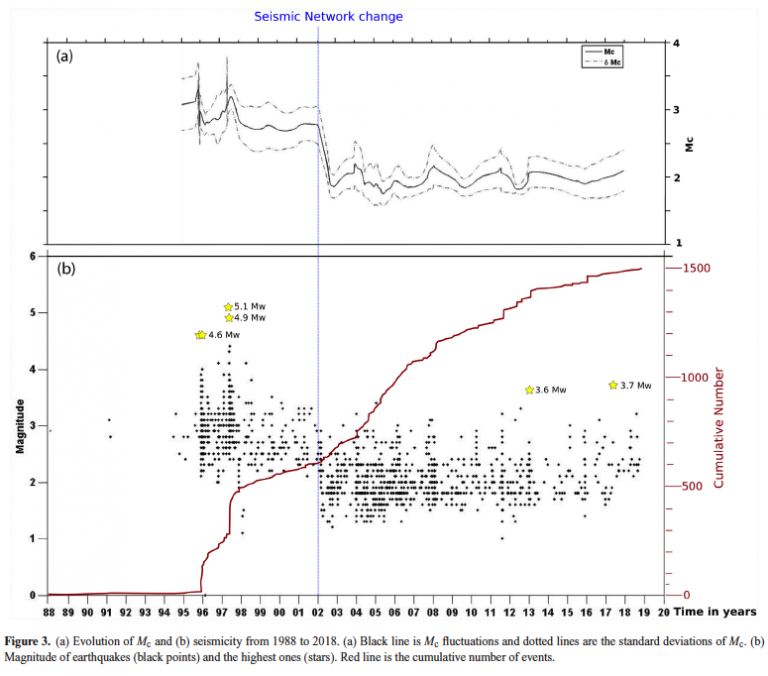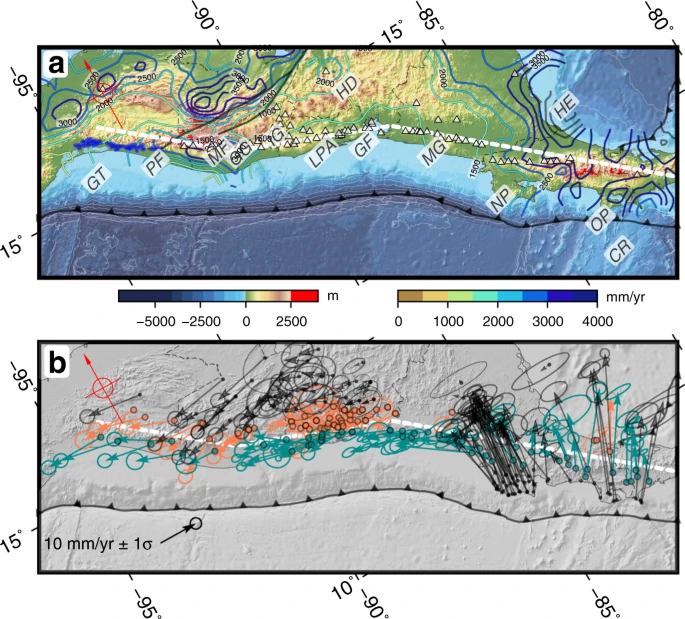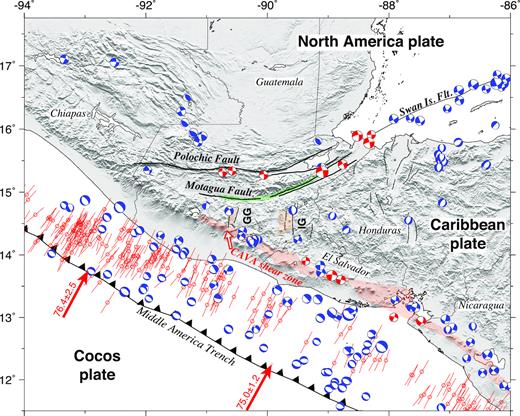The Sarria-Triacastela-Becerreá seismicity is located in an intraplate region considered seismically stable, but in 1995 started an unprecedented earthquake activity in the area. Since then an anomalous long-term continuous seismicity remains until now in the same location.
Autor: miguelgarridocorral
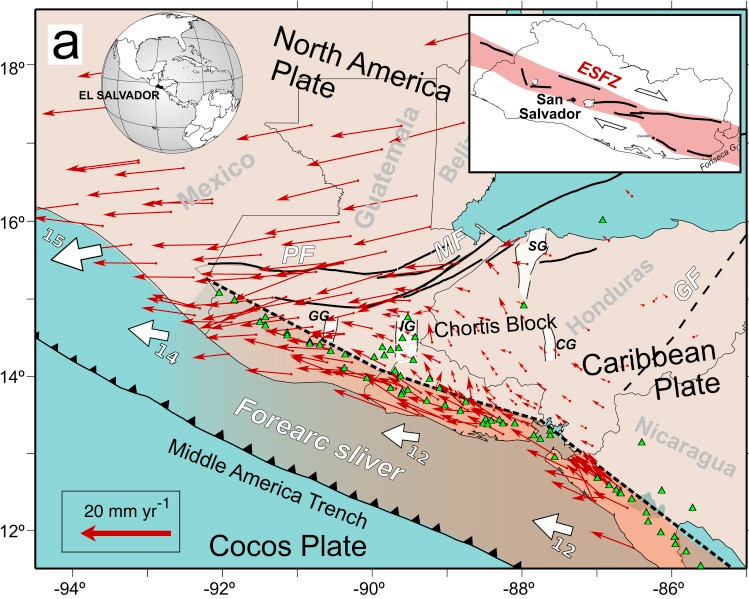
Active faults of El Salvador
In this work we present a review of the current state of knowledge of the active faults in El Salvador and its seismo-tectonic implications. An updated map of active fault traces is combined with the spatial analysis of shallow seismicity, focal mechanisms, recent geodetic GPS velocities, local strain estimations and morpho-tectonic features to provide a synoptic view of the active tectonics of the El Salvador.
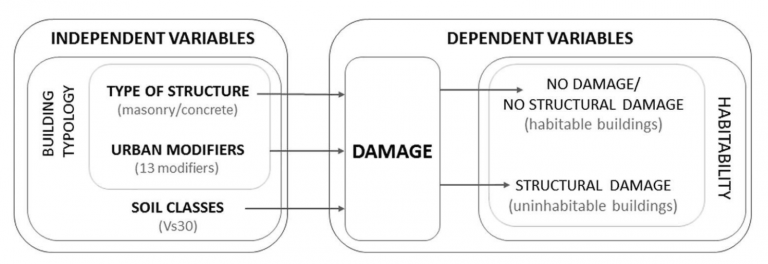
Assessing Building Habitability after an Earthquake Using Building Typology and Damage Grade. Application in Lorca, Spain
The present study proposes a statistical methodology to rate the habitability of different types of buildings after an earthquake. The first step was to rank variables that affect the vulnerability of a building and formulate a statistical study with a discrimination index that makes it possible to identify buildings as habitable or non-habitable.
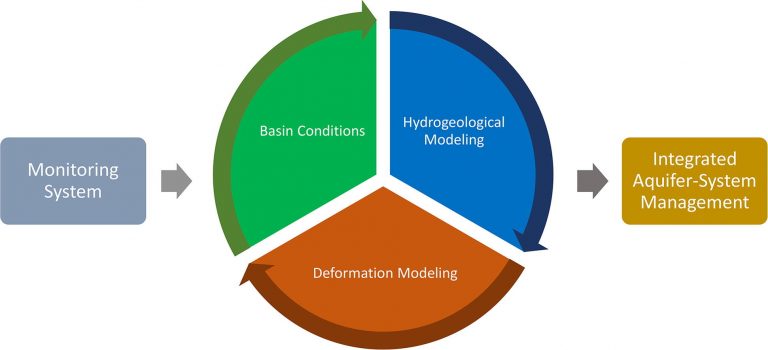
Improving multi-technique monitoring using Sentinel-1 and Cosmo-SkyMed data and upgrading groundwater model capabilities
Aquifer-systems have become a strategic source of fresh water in the present climatic conditions, especially under stress in arid regions like the Iberian Mediterranean Arc. Understanding the behavior of groundwater reservoirs is crucial to their well-management and mitigation of adverse consequences of overexploitation.
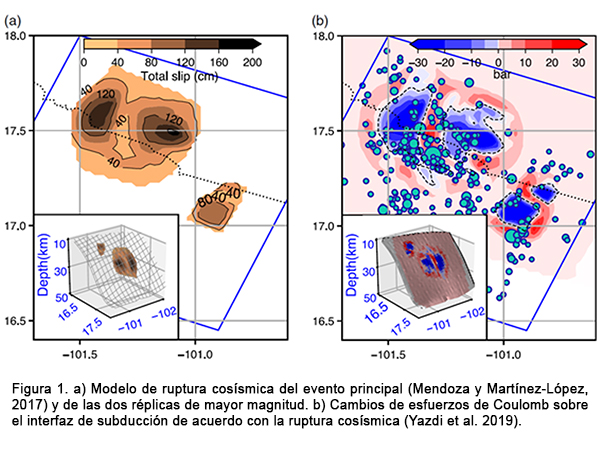
Analysis of the 2014 Mw 7.3 Papanoa (Mexico) Earthquake: Implications for Seismic Hazard Assessment
We analyze the 2014 Papanoa seismic series, located in the Guerrero, Mexico, subduction interface. First, Coulomb failure stress changes because of the mainshock, and the two largest aftershocks are calculated along the interface. The location of aftershock epicenters largely coincides with areas showing positive stress changes.
Crustal motion and deformation in Ecuador from GNSS Time Series
In this paper, we present the first velocity field from cGNSS (continuous GNSS) stations in the Continuous Monitoring GNSS Network (REGME) in Ecuador. We have analyzed data from 33 cGNSS REGME stations for the 2008–2014 period in order to characterize horizontal crustal motion and deformation in Ecuador.
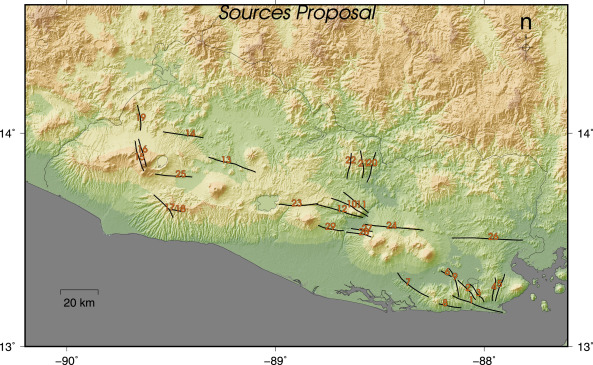
Main crustal seismic sources in El Salvador
We present a map and a data set containing information about intra-plate seismic sources in El Salvador. These are the results of the field campaigns and data analysis carried out by the research group of Planetary Geodinamics, Active Tectonics and Related Risks from Complutense University of Madrid during the last 12 years.

Approach for combining fault and area sources in seismic hazard assessment: application in south-eastern Spain
This paper presents a methodological approach to seismic hazard assessment based on a hybrid source model composed of faults as independent entities and zones containing residual seismicity. The seismic potential of both types of sources is derived from different data: for the zones, the recurrence model is estimated from the seismic catalogue. For fault sources, it is inferred from slip rates derived from palaeoseismicity and GNSS (Global Navigation Satellite System) measurements.

